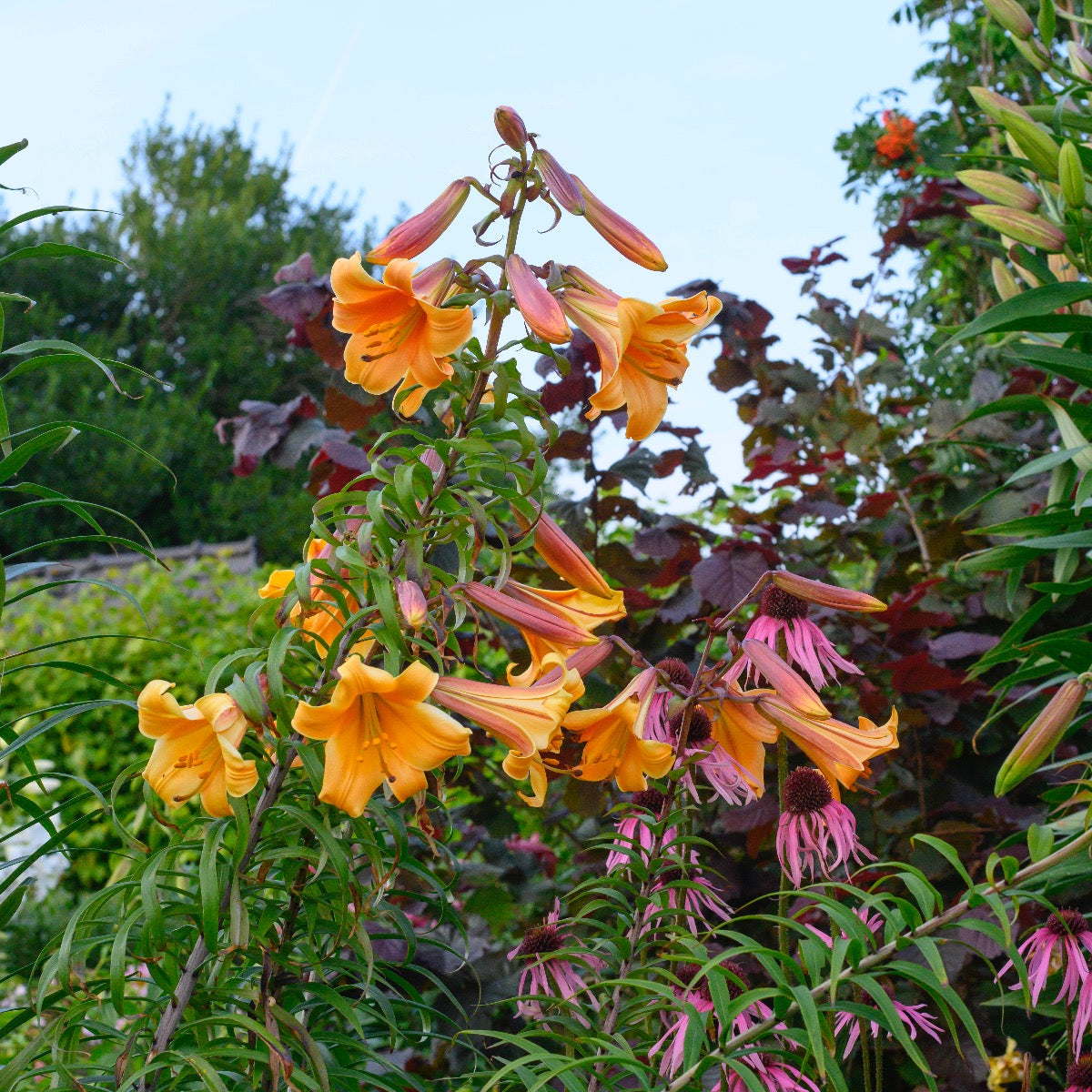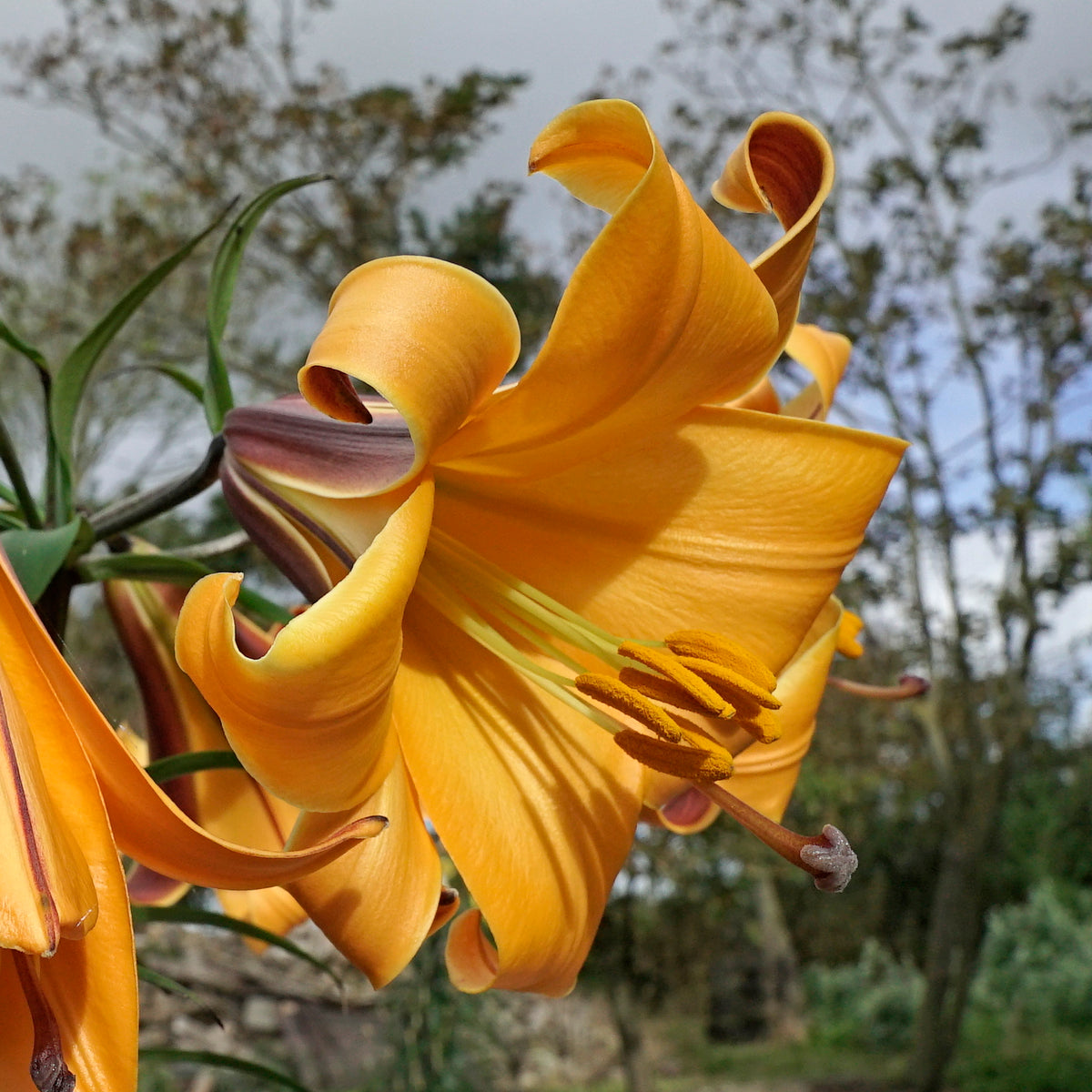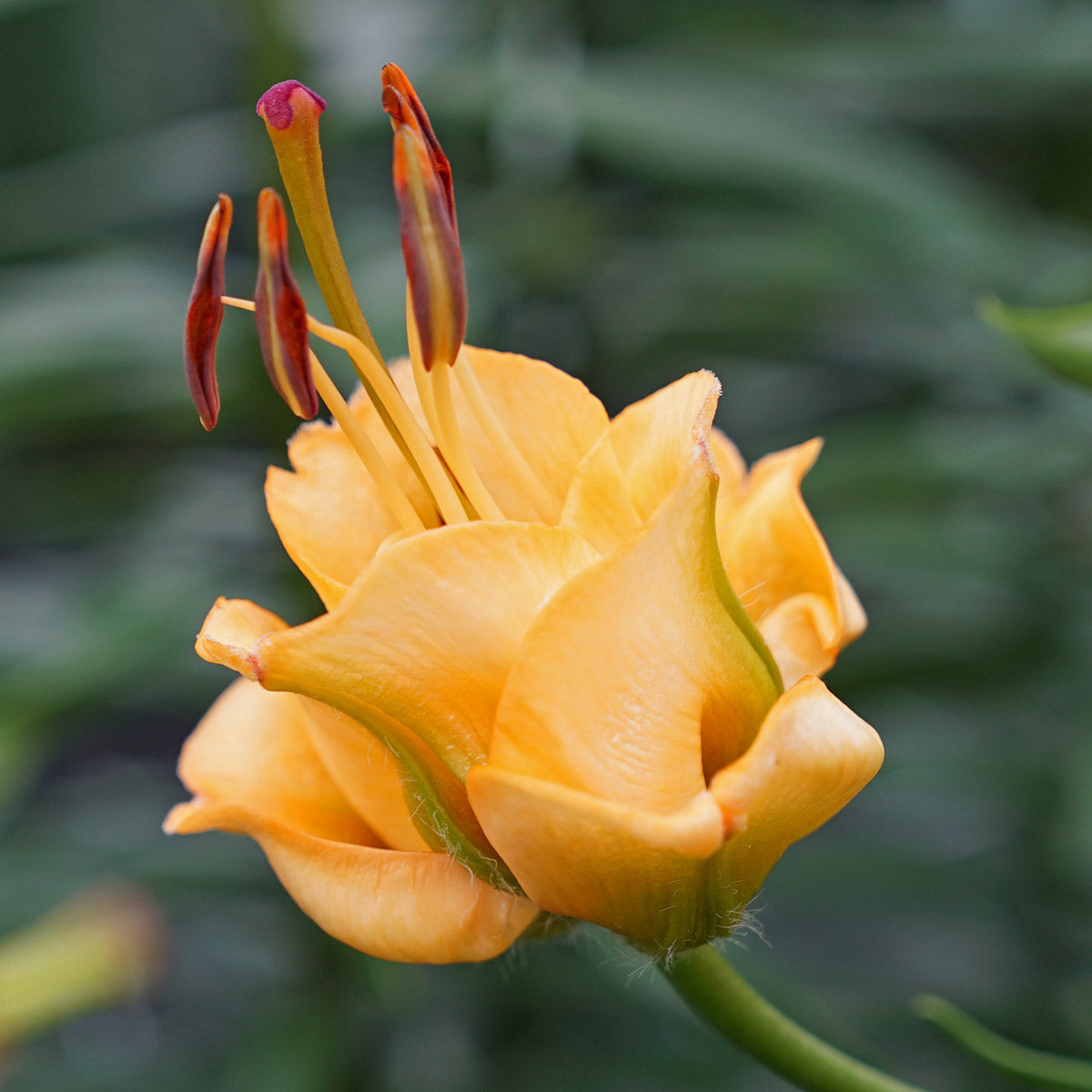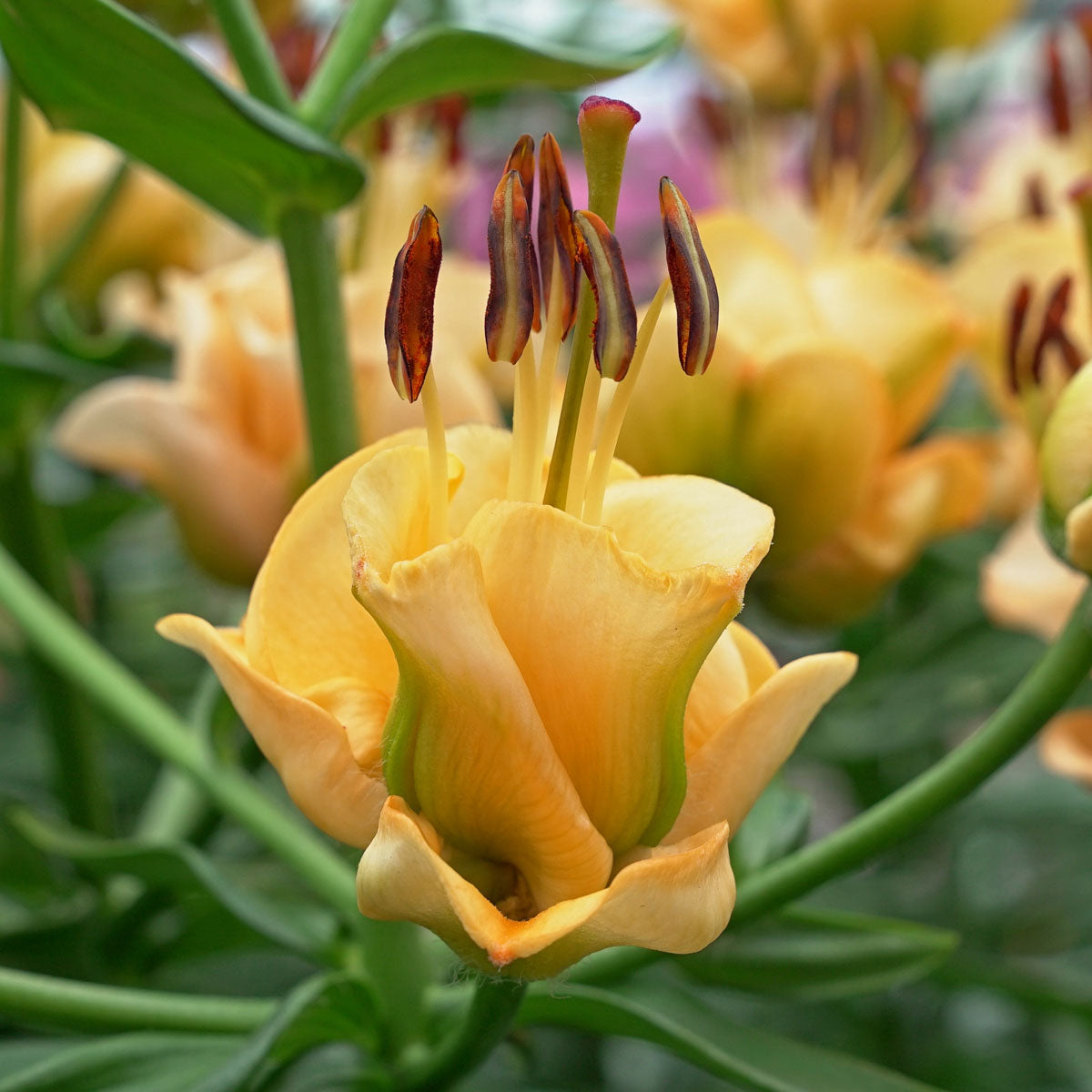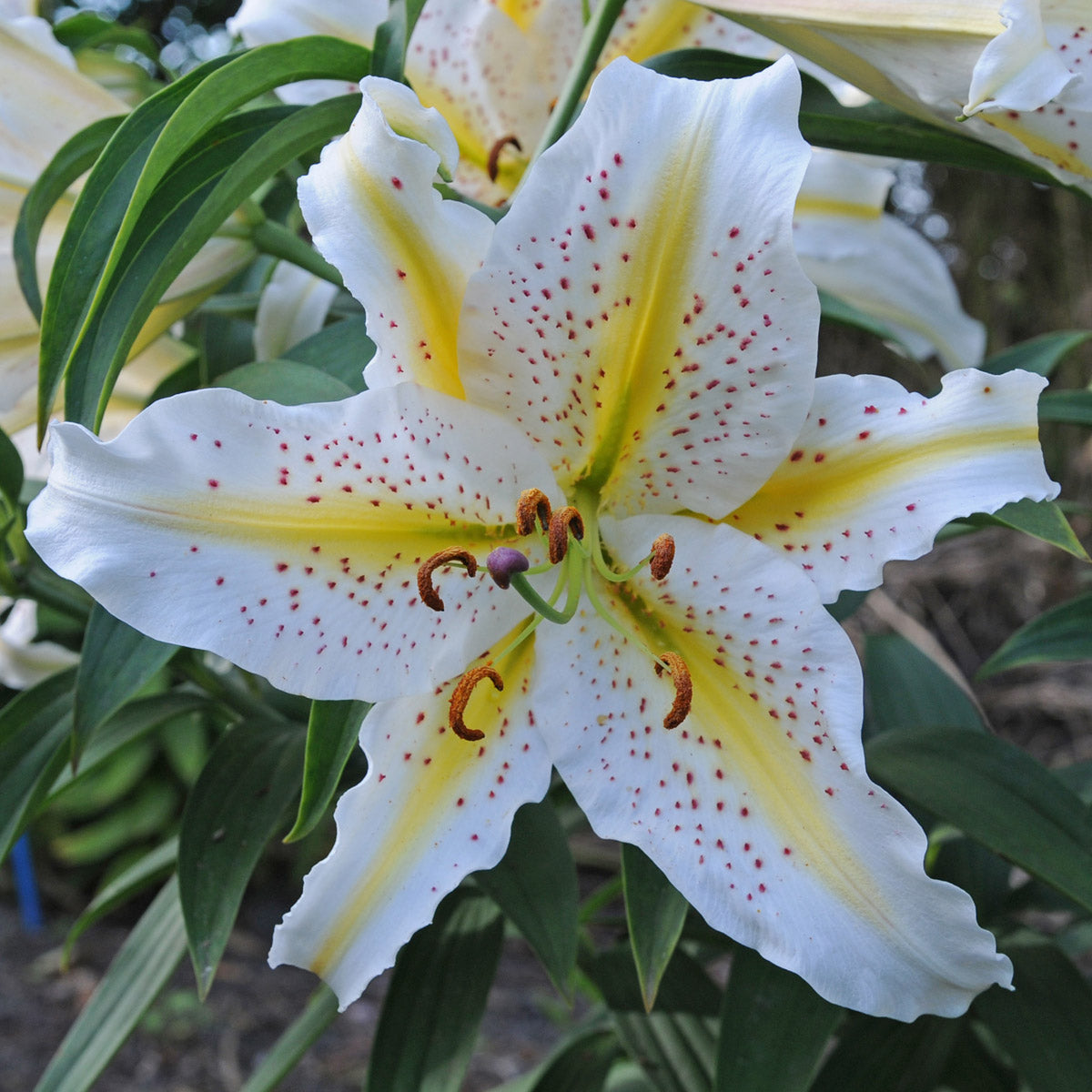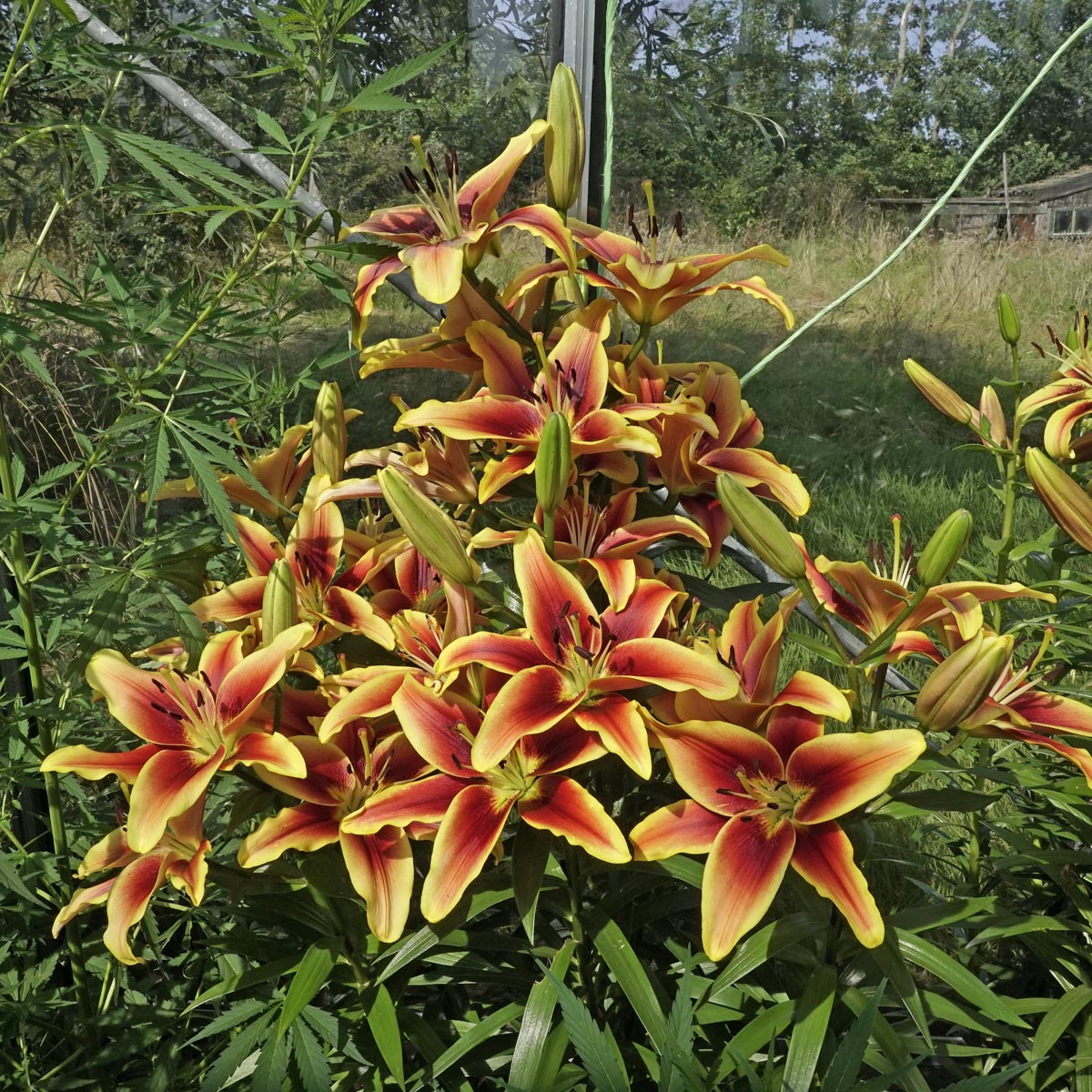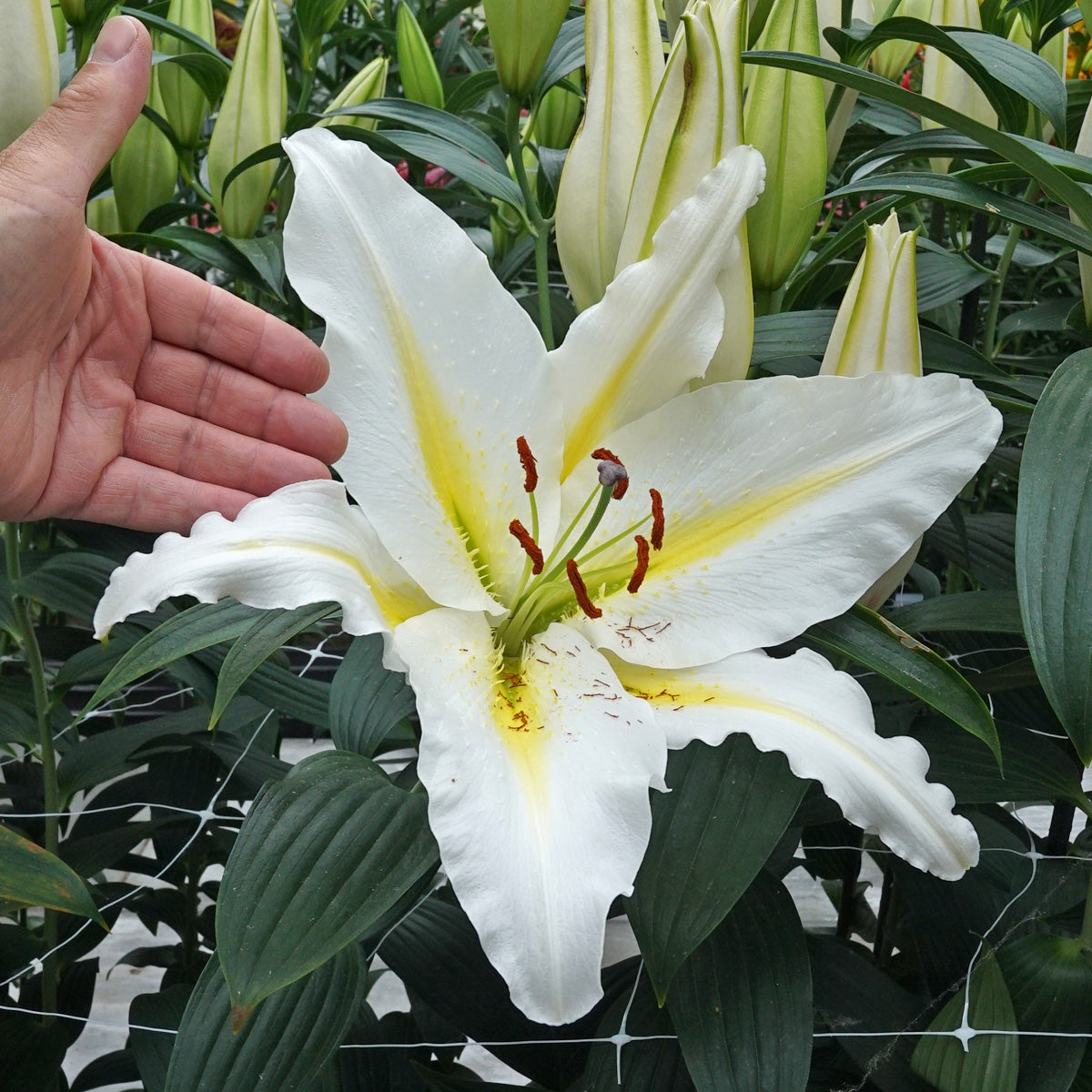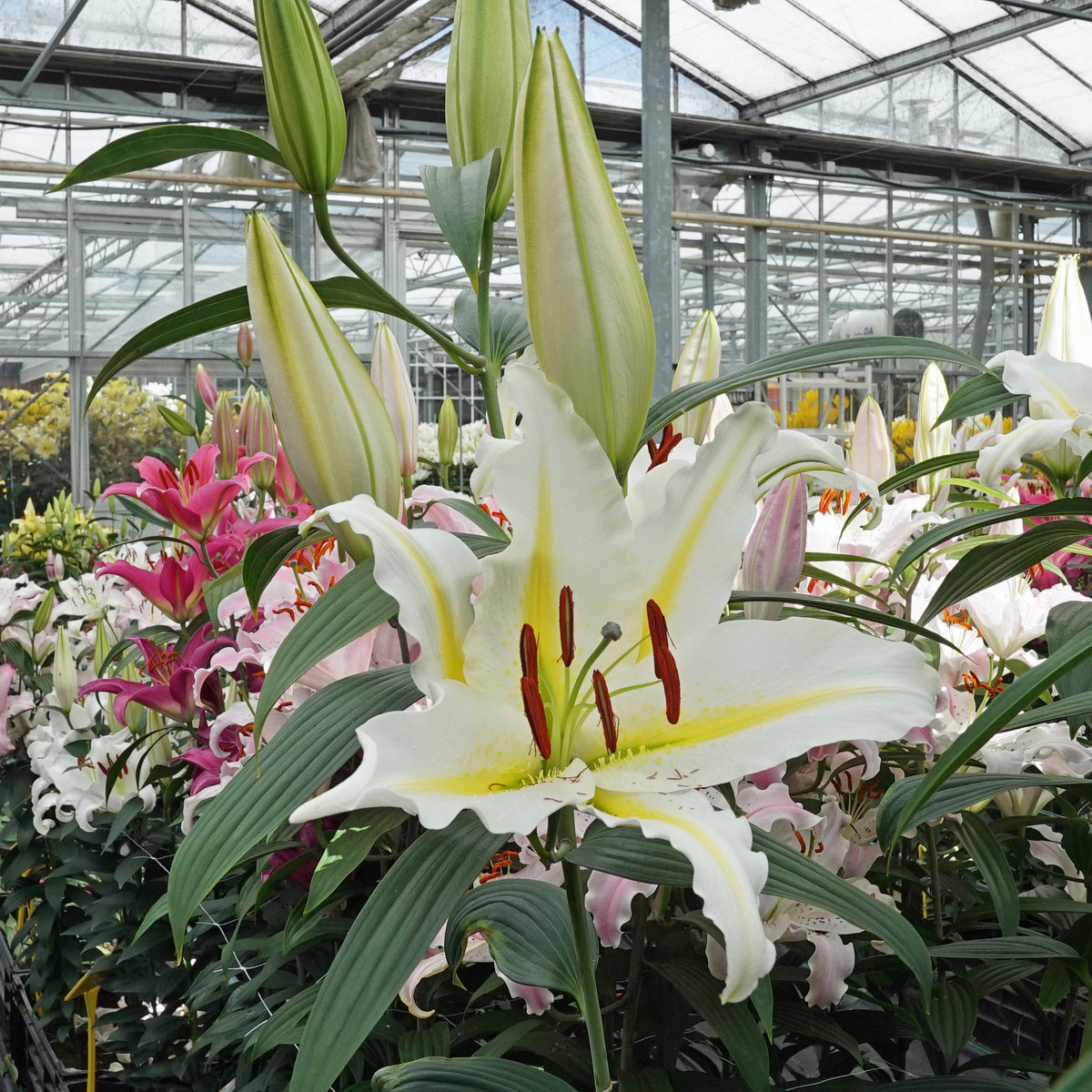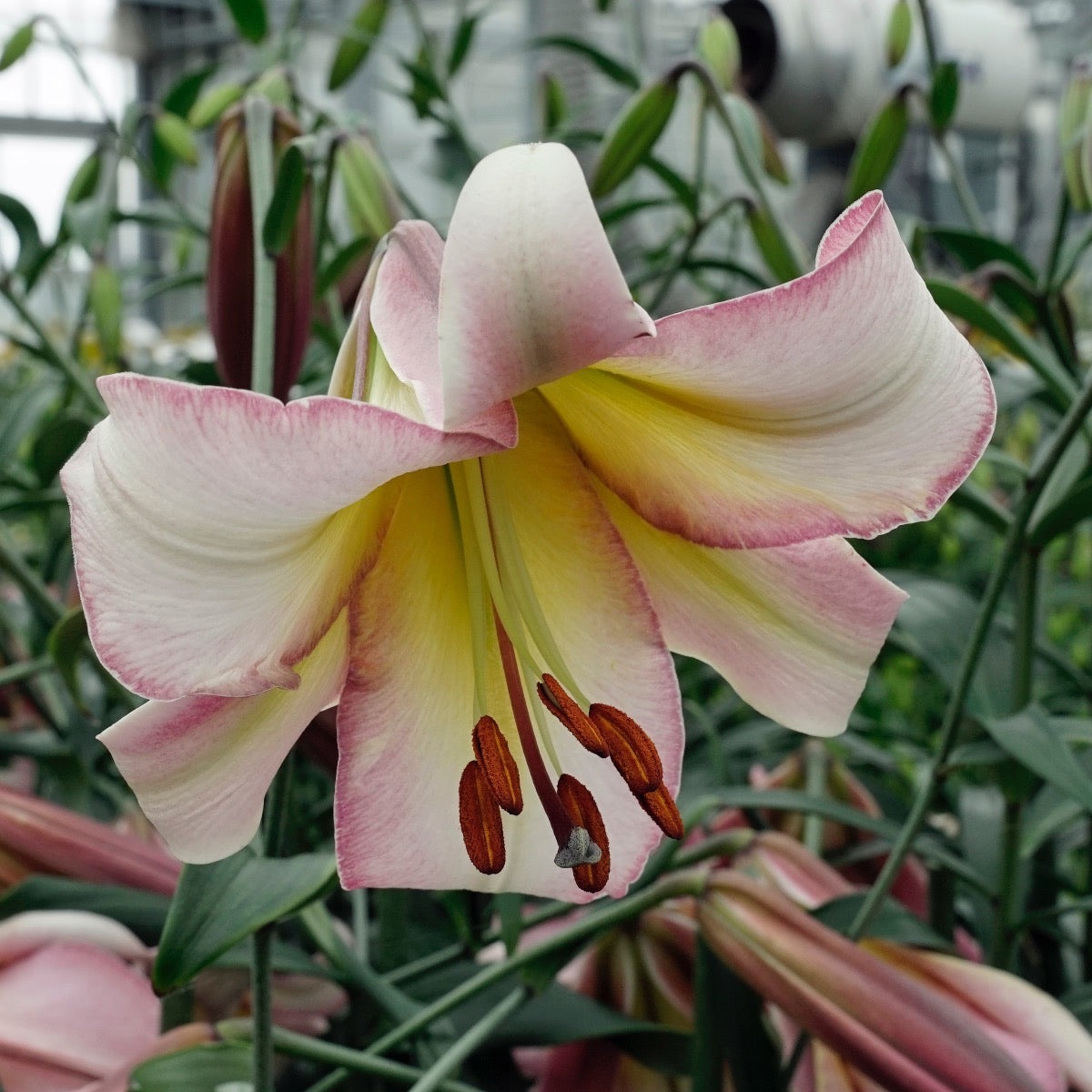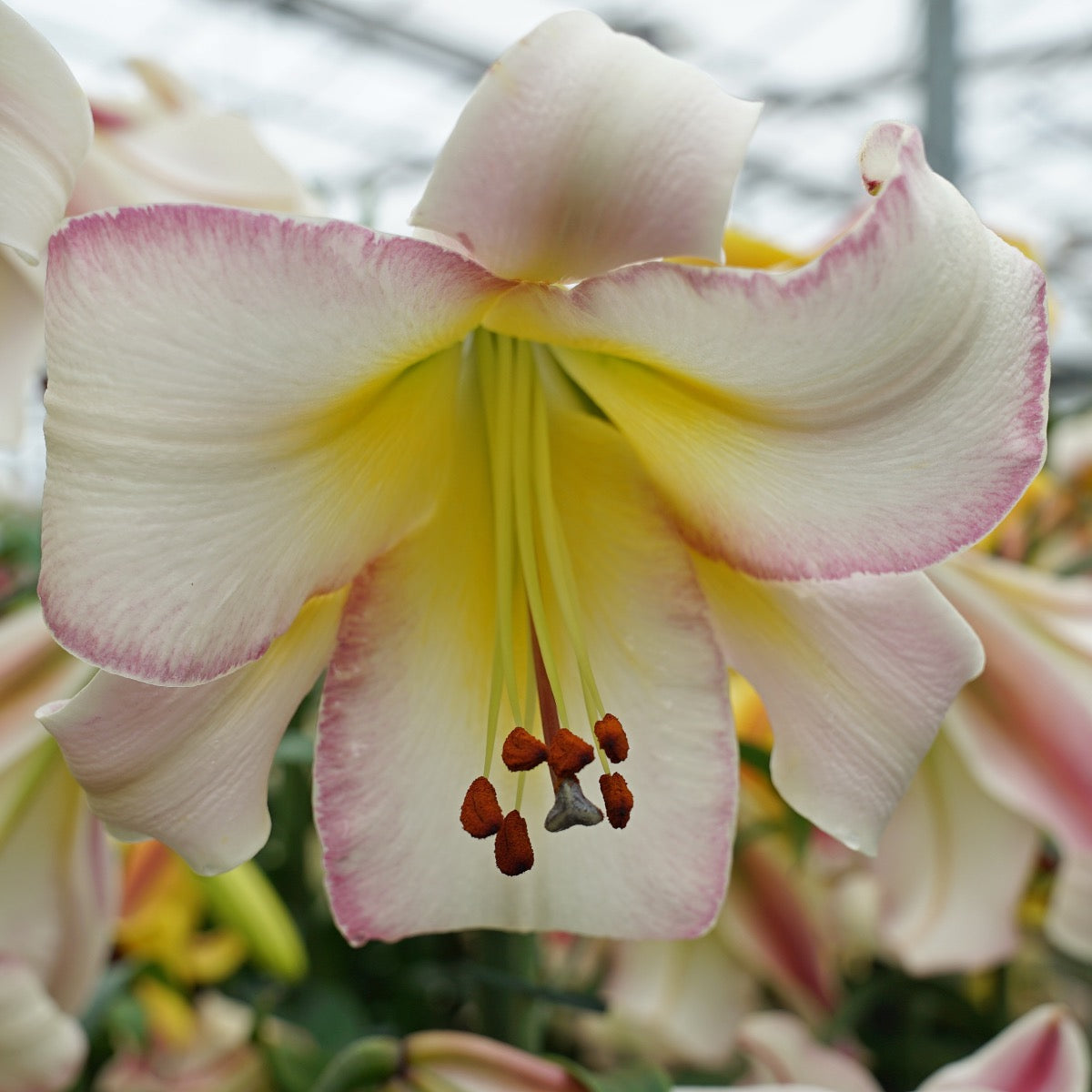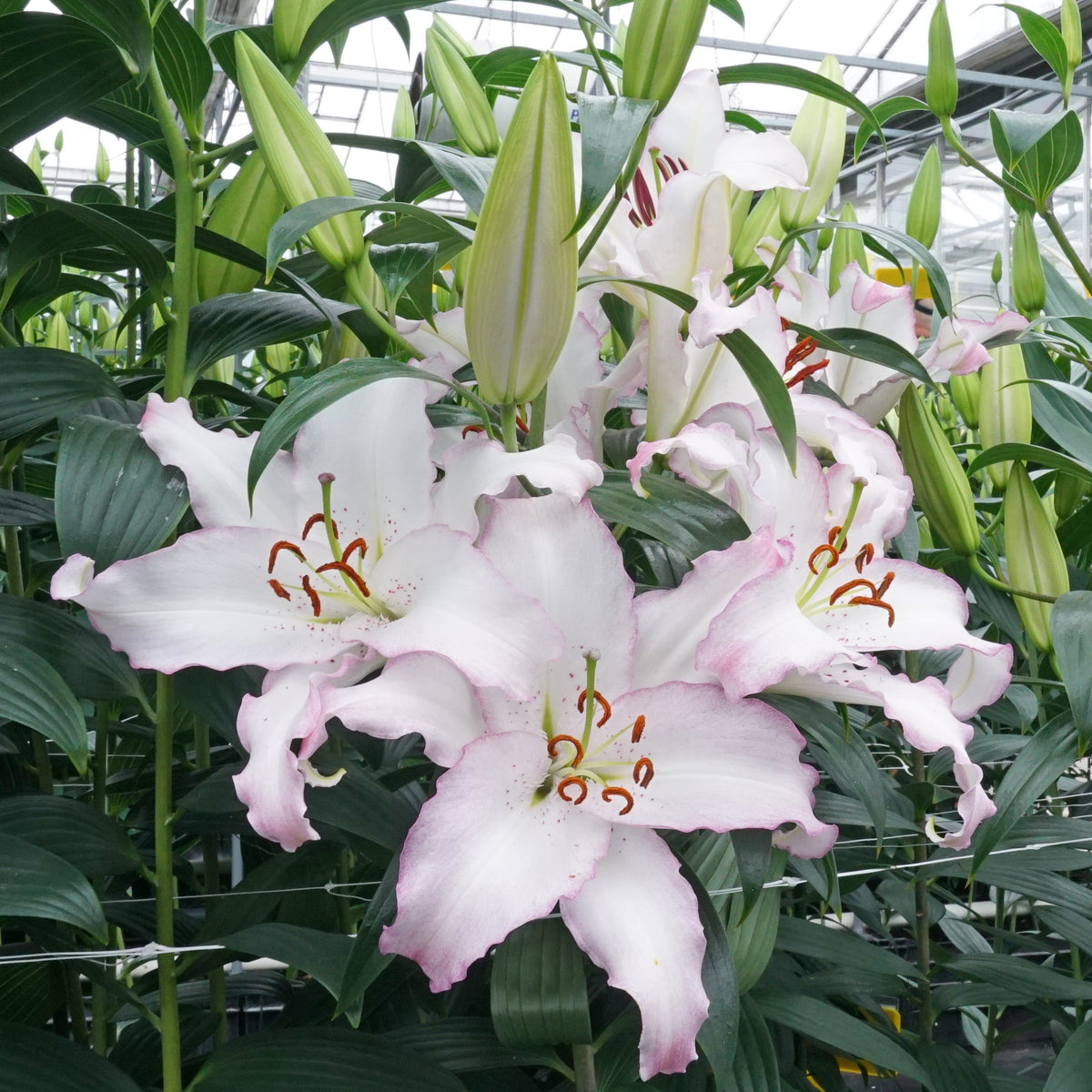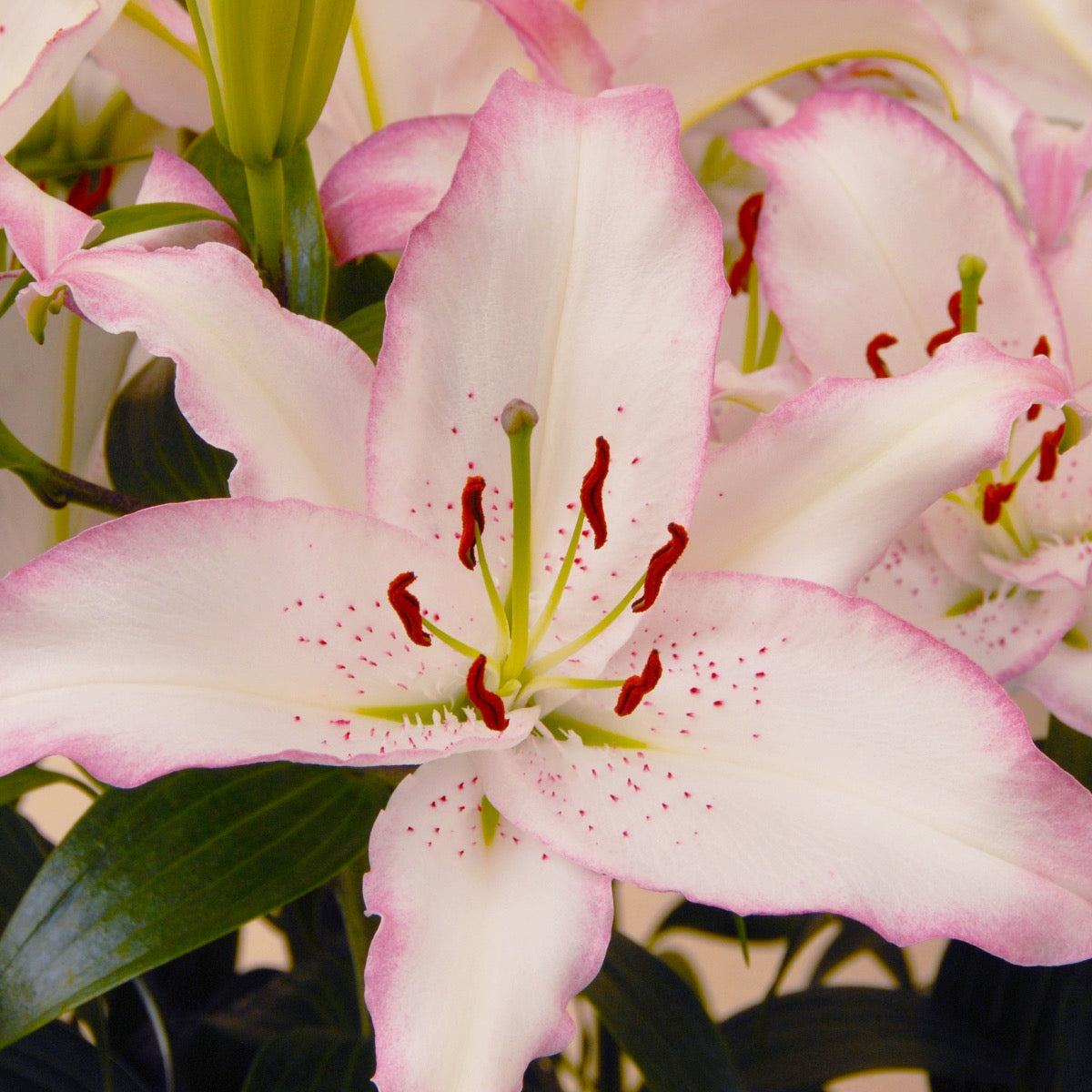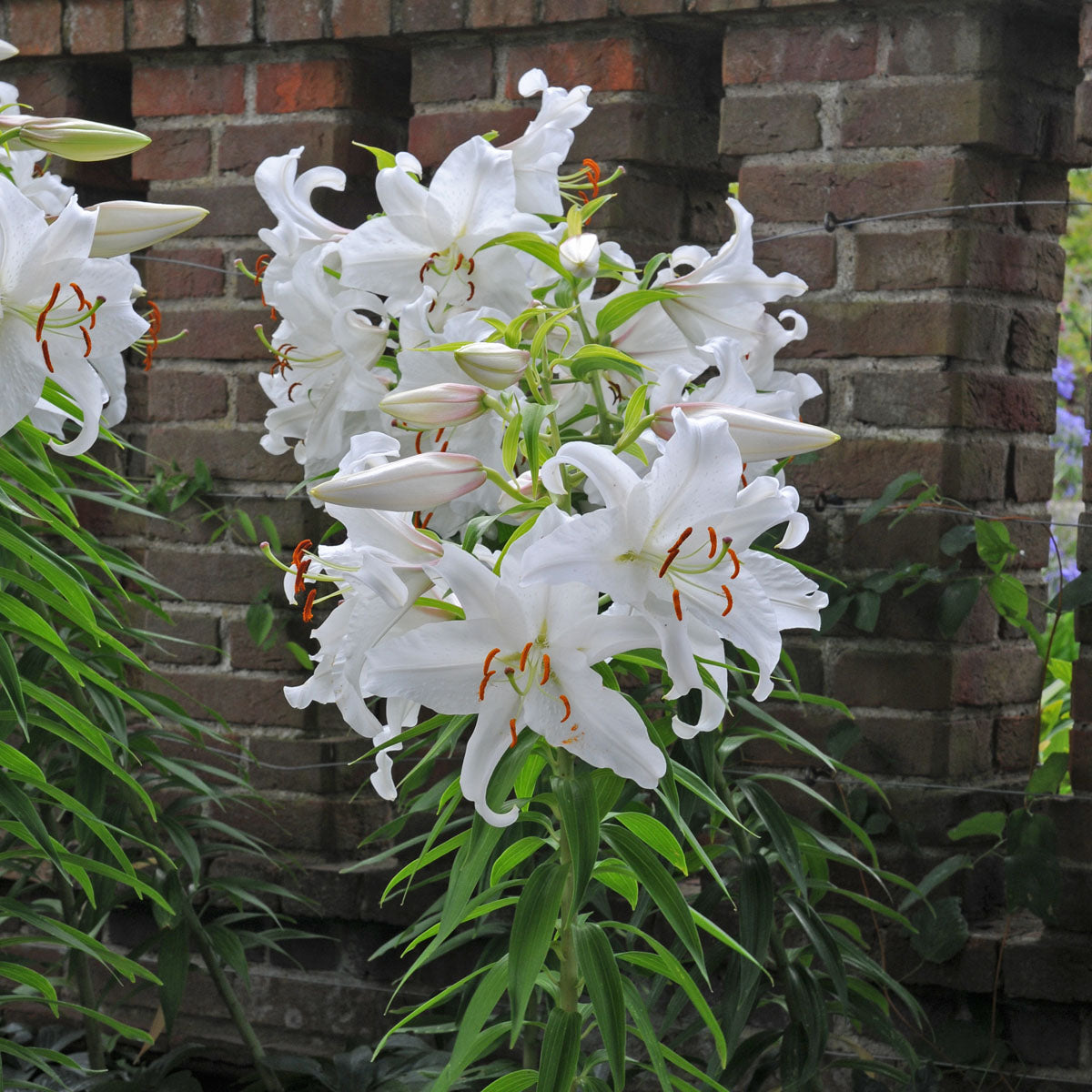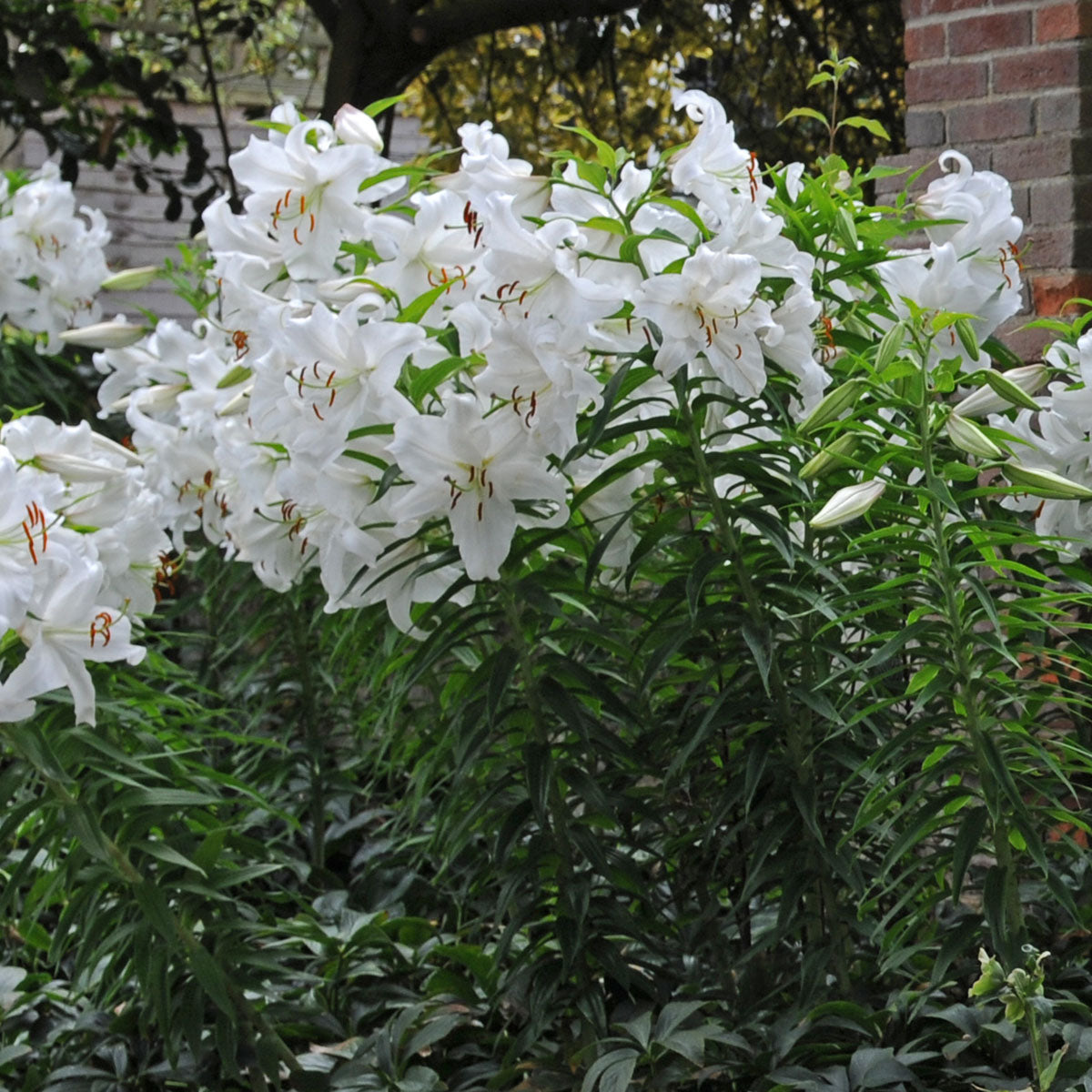
- The Lily
- Planting lily bulbs
- Where do I plant my lilies?
- Soil type
- Caring for lilies
- Lily as a potted plant
- The Lily Beetle
The Lily
The lily , like the tulip, is a flower bulb, but you might consider it a perennial. Unlike the tulip and most other flower bulbs, the lily has no skin that protects it from drying out. The roots of the lily also do not die off, as is often the case with other flower bulbs. The same roots that are on the lily bulb in the fall are used again in the spring to grow.
If roots break off during transplanting, that is really not a disaster, the lily bulb will certainly make new roots, but it is better if as many roots as possible remain. Also make sure that, just like with perennials, the roots do not dry out during transplanting.
So when you receive your lilies, try to plant the bulbs as quickly as possible to prevent the bulb and roots from drying out as much as possible.
If you have lily bulbs above ground and you are not able to plant them right away? For example, because they have just been delivered or because the ground is frozen, store the lily bulbs in a plastic bag with potting soil. Leave a small gap in the bag or poke a few holes in it so that fresh air can get in. Lily bulbs that you buy from Fluwel are also packed in a plastic bag with potting soil. This plastic is porous so that fresh air can get in, but they can still dry out if stored for a longer period of time. If you want to store the bulbs for a longer period of time, it is advisable to store these bulbs in a larger bag with more potting soil.
But try to plant your lily bulbs as soon as possible, if conditions permit. A lily that is planted early and has settled reasonably well before the spring temperatures rise will do much better than a lily that is not planted until April. It will grow a little taller, be a little stronger and its flowers will be a little larger. A lily that you plant in April will certainly do well, but a lily that is in the ground earlier will do better.
Planting lily bulbs
Plant your lily bulbs well at depth, at least 10 cm of soil on top of the bulb. For very thick lily bulbs this may also be 15 cm. Deep planting is important because the lily also makes stem roots.
Stem roots are important roots that are already formed as soon as the lily comes above ground. They provide the plant with sufficient water during the rapid growth in spring. Later in the year, these roots are again important to anchor the plant well. You can imagine that such a tall plant, especially when it is in full bloom, must be well secured.

Where do I plant my lilies?
A lily does well in European gardens. It is, if it is well rooted and planted at the right depth, completely winter-hardy. Once the lily is established in your garden, it is even able to survive the harshest winters.
The lily likes a light location with at least half a day of direct sunlight. If there is too much shade, your lily will certainly flower and even flower for several years, but it will become too long and too weak with the chance that it will break during flowering.
Another point to watch out for when planting your lilies is that they are not exposed to the wind. Especially when a lily is in full bloom and at its best, wind can cause a lot of damage.
The lily can also be used excellently between the perennials in your garden. The lily often feels right at home in a perennial border. The plants around it, especially with the higher lily species, are not a burden to it and can even provide some support. It is a beautiful sight to see lilies blooming above the plant border. A lily also likes to stand with its feet in the shade.
In short, there is a good spot for the lily in every garden.
Soil type
The lily is not picky about the type of soil. Any good garden soil in which your other plants also thrive is fine for the lily. There are a few species from the group of so-called 'Oriental' lilies that like a somewhat more acidic soil. For these lilies, it is advisable to sprinkle a generous amount of garden peat in and around the planting hole. Use garden peat and not potting soil. Potting soil has a neutral pH (or acidity), garden peat is somewhat lower in pH and therefore somewhat more acidic. If the Rhododendrons, Camellias and heather plants are doing well in your area, you do not have to worry about anything, these plants grow well when the soil is somewhat more acidic.
In the descriptions of the species in the Fluwel webshop we clearly state whether the lily likes a more acidic soil.
Caring for lilies
The lily shows explosive growth in the spring as soon as it comes above ground. Keep in mind, especially in the first year of planting, that the soil remains sufficiently moist so that the stem roots can develop well. In the following years, once the lily is established, this is less important because it has a well-developed root system - also under the bulb - that can provide the plant with water. In general, there is sufficient rain in the spring, but keep a close eye on this. The top layer of the soil can dry out quickly and this is precisely the part where the stem roots that ensure the rapid supply of water are located.

Lily as a potted plant
Use a large pot with a capacity of at least 10 litres, preferably more. In a pot of this size the lily can develop a good root system and the large amount of soil also provides a good water buffer. Especially when your lilies are in full bloom they use a lot of water. If your pot is on the small side you will be watering every few days during the flowering in the summer months. Also do not fill the pot to the brim with soil, if you keep the soil level a few cm below the rim of the pot you can much more easily give a good splash of water.
Furthermore, in the pot, just like in the garden, there must be at least 10 cm of soil on top of the bulb.
Feel free to leave your bulbs in the pot overwinter, just as you would with a perennial. They will simply reappear in your pot next spring and - if you have cared for them well - they will certainly be as beautiful as the previous year.
The Lily Beetle
When talking about lilies with fellow gardeners, it almost always comes up: the Lily Beetle . For one, there is no bigger problem than the Lily Beetle, another says he has never heard of it, while a third says it is not so bad as long as you just squeeze them to death when you see them.
But often the mistake is made that the Lily Beetle, the red beetles, are the culprits and eat the leaf of the lily. In reality it is the larvae of this creature that causes much greater damage and eats the leaves of the plant.



The larva of the lily beetle is a small, fat, white-grey caterpillar. But you cannot see this caterpillar, because it nestles itself completely in its own excrement. What you see is a small pile of slimy goo, usually on the underside of the lily leaf. You must remove these lumps of goo, because this is where the culprit is located. In this goo sits the caterpillar of the lily beetle, which quietly nibbles on your lily plant, leaf by leaf.
From January 1st (as pre-order) until about April 1st the lilies are available in the Fluwel web shop . You are most welcome to take a look at our assortment.

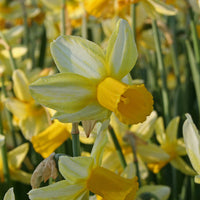



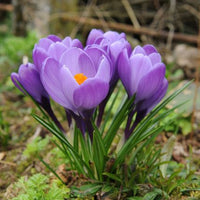




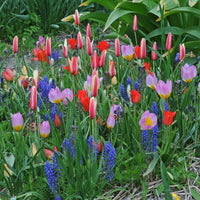


 Deutsch
Deutsch English
English

